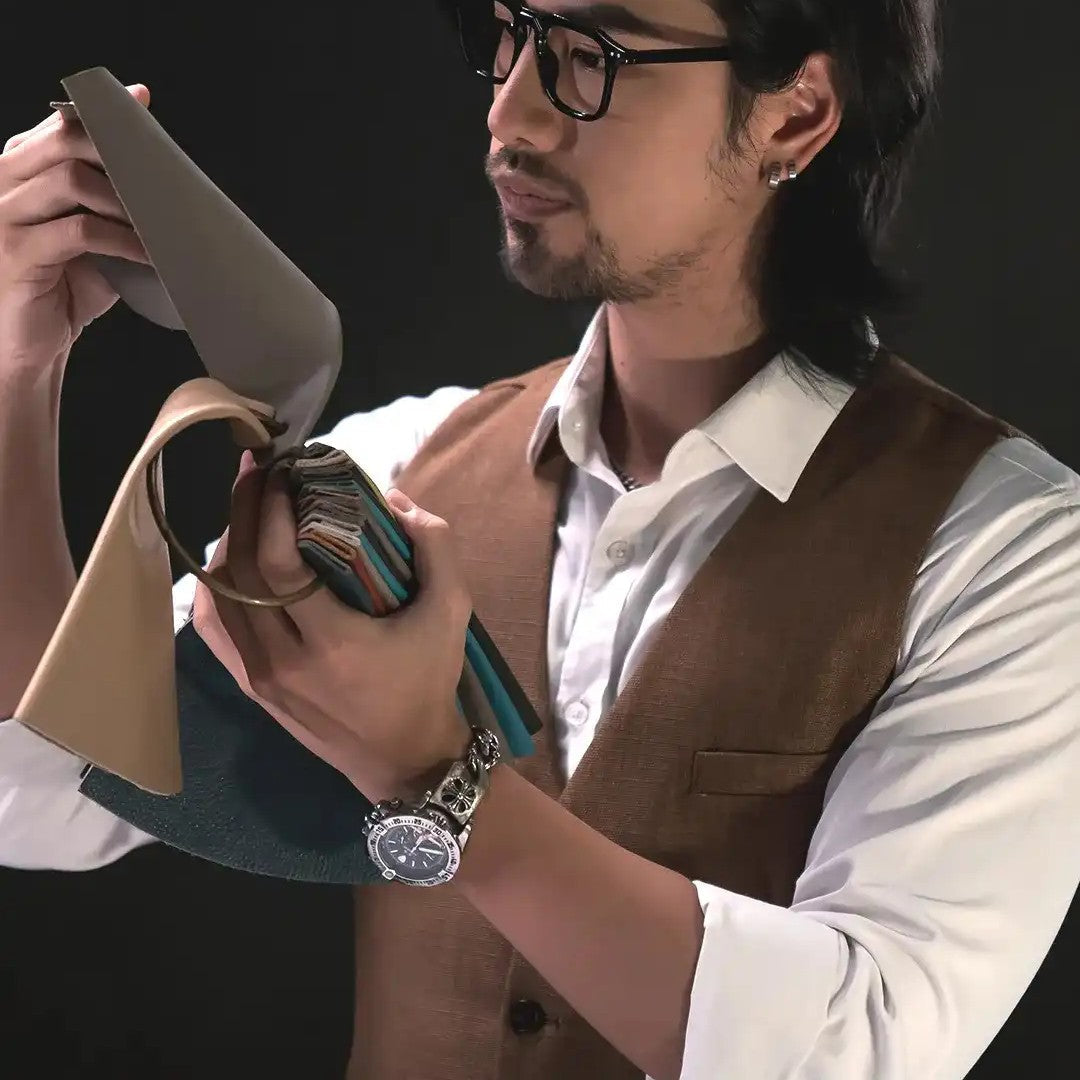When it comes to leather selection, understanding the material’s origin, treatment, and finish is essential. In this guide, we’ll explore a practical method for evaluating leather that goes beyond common assumptions like “vegetable-tanned is hard” or “chrome-tanned is soft.” Whether you're shopping for a premium genuine leather sectional sofa or crafting a handmade wallet, choosing the right leather is key to lasting quality and satisfaction.

The Leather-Making Process: A Quick Recap
Leather starts as animal hide and passes through several stages:
Animal → (Rawhide) Pre-treatment → (Wet Blue or Veg Tan) Tanning → (Crust) Finishing → Leather
Each phase involves choices that affect the final product’s characteristics. For example, cowhide can be either vegetable-tanned or chrome-tanned, and both can undergo additional treatments like softening, embossing, or coating. Even goat or sheep hides can be vegetable-tanned. The endless combinations make each leather product unique.
Why Tanning Method Alone Isn’t Enough
Many people classify leather into two main types: vegetable-tanned and chrome-tanned. However, this approach is limited. It doesn’t account for post-tanning processes that significantly influence feel, look, and durability. For instance:
- Vegetable-tanned leather isn’t always stiff—it can be softened and made elastic.
- Chrome-tanned leather can be crafted to be firm and structured.
- Natural finishes aren't exclusive to vegetable tanning; chrome-tanned leather can also be dye-finished without heavy coatings.

So instead of focusing solely on tanning method, pay attention to the surface finishing and texture. These are more closely aligned with how you’ll actually use the leather item.
Two Key Criteria for Leather Selection
1. Surface Finish Type
Surface finish includes more than just paint or dye. It also involves waxing, buffing, polishing, and pressing. These treatments greatly impact the leather's final appearance and hand feel.
Here are some popular finish types:
- Aniline/Full-grain dyeing: Maintains a natural look with visible pores.
- Semi-aniline: Slight coating for protection, still showcases the leather’s texture.
- Pigmented: Heavier coatings that make the leather more scratch-resistant.
- Embossed or textured finishes: Used to standardize appearance or mimic exotic skins.
2. Type of Animal Hide
Each animal hide has its own fiber structure and characteristics:
- Calfskin: Fine pores, soft, and durable—commonly used in luxury goods.
- Goatskin: Lightweight with a noticeable grain, used for high-end accessories.
- Lambskin: Extremely soft but less durable.
- Cowhide: Versatile and strong, often used in furniture like the brown leather sectional sofa or Verona Sectional Sofa.
- Exotic leathers: Like crocodile, ostrich, and lizard offer unique textures and status appeal. Crocodile quality varies—caiman is stiffer, while Nile or alligator is more supple and expensive.
Even with advanced surface treatments, inherent characteristics like elasticity or firmness are still influenced by the animal source.
How to Choose the Best Leather for Your Lifestyle
Instead of obsessing over “better” or “worse” leather, think about how you plan to use the item. Consider these scenarios:
- Love natural texture? Choose aniline-dyed or full-grain leather.
- Prefer a soft touch but need durability? Go for lightly pigmented calfskin or lambskin.
- Don’t want to worry about scratches? Opt for pigmented leather or even embossed goat leather.
- Seeking toughness and rugged charm? Try nubuck or oil-rich distressed leather like crazy horse (pull-up) leather.
Bonus Tip for Furniture Buyers:
When shopping for a modular sectional sofa or a genuine leather sectional sofa, focus on how the leather feels under your hand and how it responds to light. Sofas experience daily wear—look for semi-aniline or lightly pigmented leather for the perfect blend of beauty and durability.
And while leather quality is important, craftsmanship also plays a vital role. A skilled artisan can select the right part of the hide and avoid visible imperfections, turning even a mid-grade hide into a premium product.
Experience Leather Firsthand
If you're serious about understanding leather, nothing beats a hands-on experience. Kumo Home offers a half-day leather appreciation course where you’ll touch and compare over 10 types of leather. This includes iconic materials like Hermès goatskin, Togo, Epsom, Barenia, and exotic options like lizard, ostrich, python, and the highly coveted Himalaya crocodile.

The course wraps up with you hand-stitching a minimalist cardholder using traditional French techniques—perfect for deepening your appreciation for fine leather goods.
Explore More for Your Living Room
Leather isn't just for fashion—it transforms your home as well. Discover our premium furniture collection, including the Verona Sectional Sofa and other modular sectional sofa designs. Whether you’re styling a modern loft or a cozy den, a brown leather sectional sofa adds warmth and timeless appeal.
👉 Browse our collection of leather furniture and dining tables
Stay Inspired with Kumo Home
For more inspiration, leather tips, and home styling ideas:


